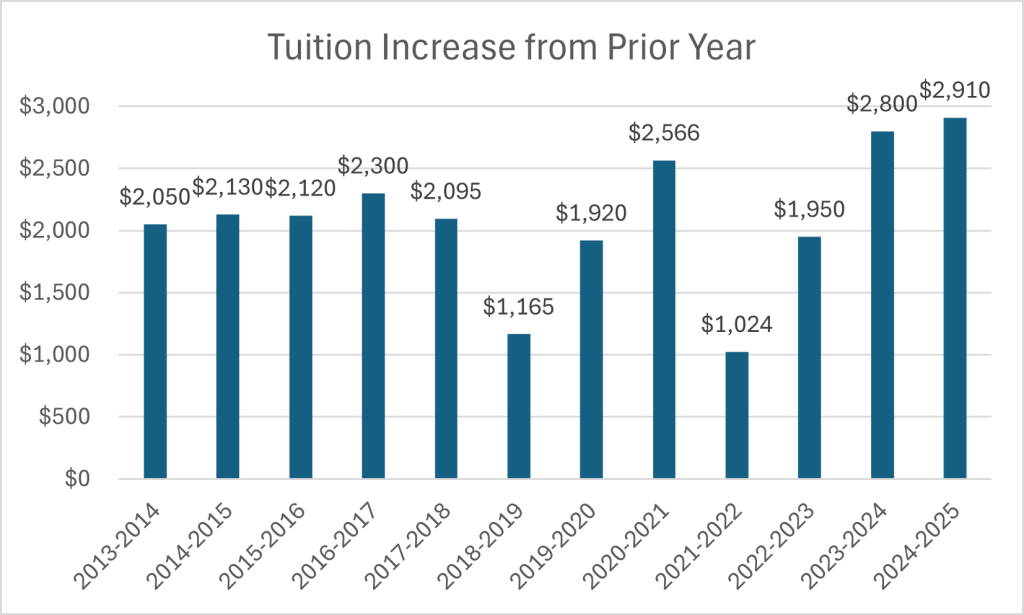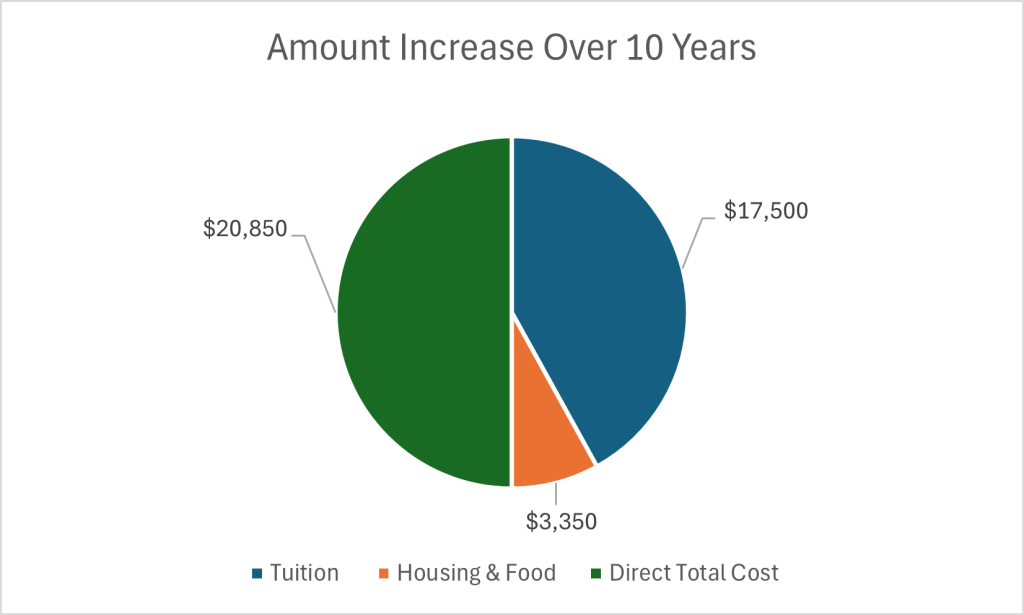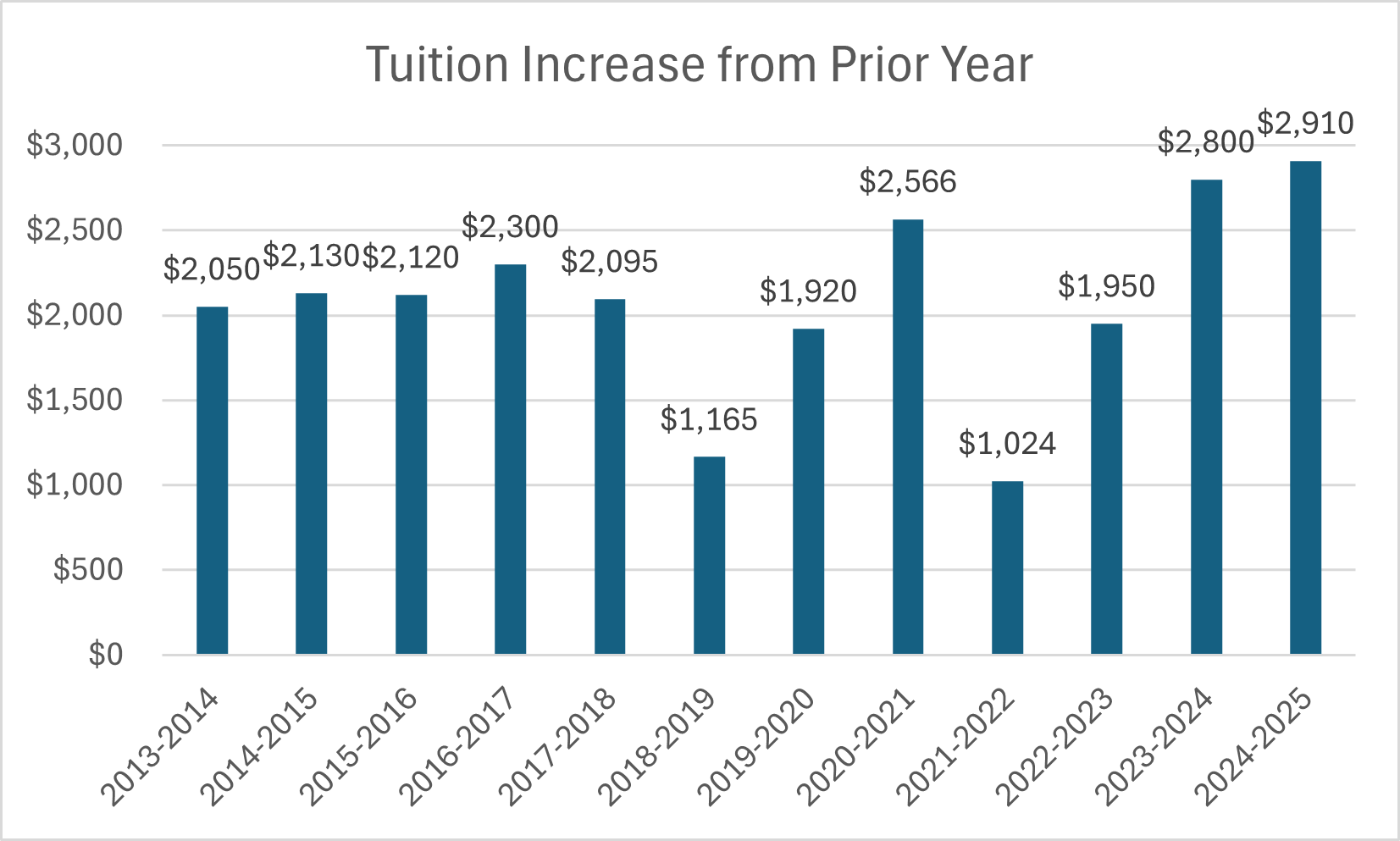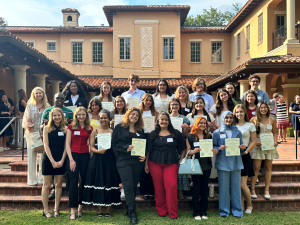Amidst the time of finals preparation and the holiday season anticipation, President Cornwell sent out an email stating a 3.9-percent tuition increase will go into effect for the 2025-2026 academic year.
The email said, “To continue providing the high-quality education you expect, [Rollins] must budget carefully each year.” Facility maintenance, utilities, and compensation for faculty and staff were taken into consideration when making this decision.
The President emphasized how the highly anticipated East End Neighborhood and Tennis & Golf Center are not funded by tuition.
In the “Historic Tuition Rates” section located on the Financial Aid section of Rollins’ website, it states that tuition and room and board have increased each year between 1.5 percent to 3.9 percent from the 2013-2014 academic year to this academic year. This information is provided to help students plan for the next four years as tuition increases are expected.

Vice-President for Business and Finance Ed Kania described the process of deciding on the tuition’s increase. He said, “We estimate our revenues from sources other than tuition and fees, which includes gifts, endowment earnings, and income from commercial properties. We analyze our major expenses which include staff and faculty compensation, utilities, and property insurance as well as the estimated costs of maintaining a high-quality level of student services.”
Kania explained the different parts of the process, which includes considering reallocation of the budgets and looking into the need for additional revenue in specific areas. The final part of the process includes the Board of Trustees meeting to review and approve the tuition and fee recommendations.
Every part of the process is taken into consideration when making the decision on where and how much to increase tuition. The college prepares a budget each academic year and adjusts what and where needs more funds.

Many students have opinions and concerns regarding this increase. Avery Parish (‘27) said, “I am able to attend Rollins College because of the grants and scholarships they gave me. I did not think I was going to attend Rollins due to the amount of money but was pleasantly surprised.”
Some students depend on grants and scholarships to be able to attend Rollins. The scholarships offered in admissions letters are fixed and do not change regardless of the price increase. On the other hand, grants are not fixed and change with the FAFSA each year. The Financial Aid office looks at the need-based aid each year and adjusts it accordingly.
When asked why this change was decided on now, Steve Booker, Director of Financial Aid, said, “The FASFA comes out earlier (December 1), and if we waited until spring, incoming and returning students would not be given enough time to figure out affordability and to talk to the financial aid office before making any decisions.”
After the add/drop period next semester, aid offers will be sent out to students. If the FAFSA is filled out in a timely manner, students will be given time to make financial decisions and ask the financial aid office any questions. To alleviate any students’ anxiety, Booker said, “Knowledge is power. Book an appointment to meet with a financial aid counselor, whether that is in person or video chat. Parents can join in on the video chats as well.”
To get in touch with a Financial Aid Counselor, call (407) 646-1863 or email finaid@rollins.edu. You can also submit a question to the office by using the Financial Aid Contact Form, located on Rollins’ website under Contact Financial Aid Counselors.












Comments are closed.